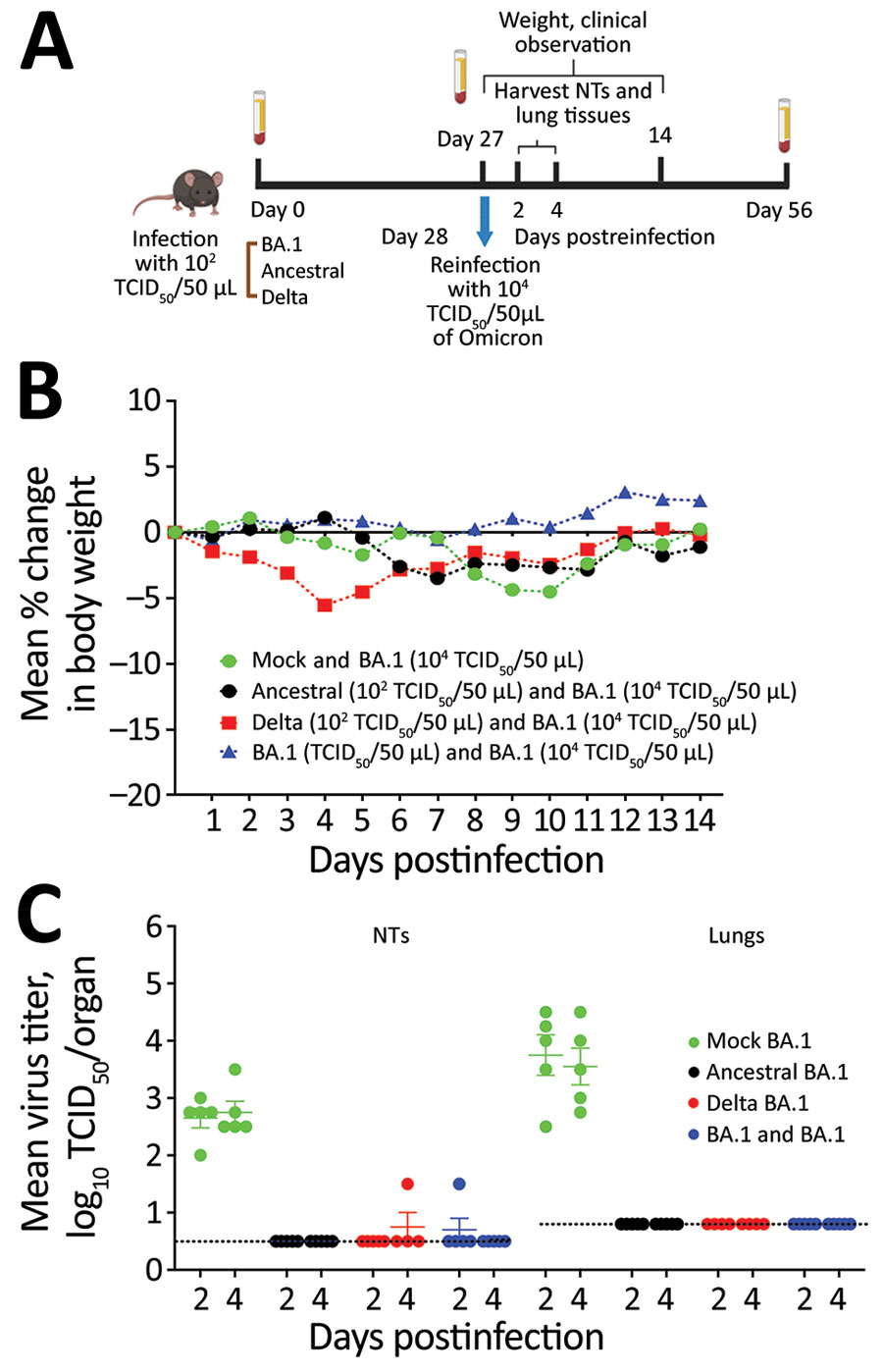Volume 28, Number 11—November 2022
Research Letter
SARS-CoV-2 Omicron BA.1 Challenge after Ancestral or Delta Infection in Mice
Figure

Figure. Primary infection with ancestral, Delta, or Omicron BA.1 SARS-CoV-2 strains as protection in mice from BA.1 reinfection. A) Flowchart of 6- to 8-week-old female hACE2K18 transgenic mice who received primary infection with low doses (102 TCID50) of Omicron BA.1, ancestral, or Delta viruses and were reinfected with a higher dose (104 TCID50) of BA.1. B) Weight loss in mice reinfected intranasally with 50 μL containing 104 TCID50 of Omicron on day 28 after primary infection with each SARS-CoV-2 strain. Animals were monitored daily for weight loss, and deaths were recorded over a period of 14 days. Mice were euthanized when they lost 20% of their original bodyweight. C) Replication kinetics of Omicron BA.1 virus in mice after reinfection with 104 TCID50/virus. Virus titers in the NTs and lungs of 5 mice per group euthanized on days 2 and 4 postinfection are expressed as log10 TCID50/mL (NTs) and log10 TCID50/organ (lungs). Horizontal bars represent mean titers, and symbols represent titers from individual mice. The dashed horizontal line indicates the lower limit of detection, 100.5 TCID50 per mL for the NTs and 100.8 TCID50 per organ for lungs. NTs, nasal turbinates; TCID50, 50% tissue culture infectious dose.